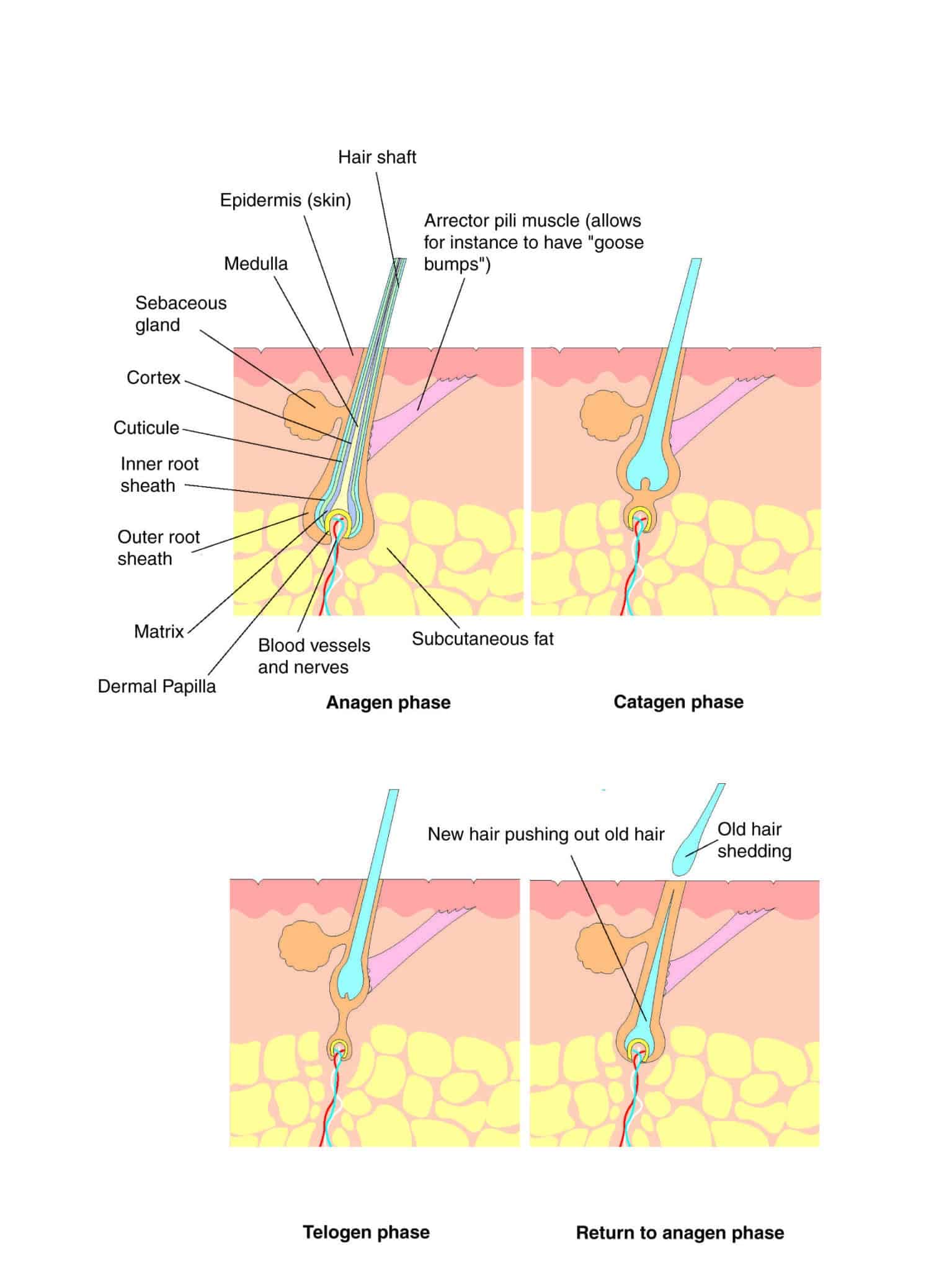
When everything is going as it should, there are three stages of the grow-shed cycle. The first is the anagen stage, which lasts from two to six years. During this stage, hair is firmly seated in the hair follicle, getting plenty of nourishment, and growing at a rate of one quarter to one half an inch per month. This happens with more frequency in our youth, and lessens as we age.
“More than 85% of scalp hair is in this phase at any time,” says dermatologist Dr. Wilma Bergfeld, head of dermatology research at the Cleveland Clinic in Cleveland, Ohio. So, most of our hair is constantly in the process of feeding and growing.
The second is the catagen stage, which lasts from three to six weeks. During this stage, the hair root begins to separate from the hair shaft and nourishment falls off dramatically. As the hair shaft works its way out of the follicle, it is readying itself for shedding.
The third is the telogen stage, which lasts from three to five months. During this stage, nourishment for the “old” hair shaft has ceased, the hair follicle has gone into a resting stage, and hair falls — or is brushed or combed or washed — out. After a brief rest, the follicle re-enters the anagen stage, and the cycle begins again.
Normal shedding usually stops at some point, but not all shedding is normal. If you are losing more than 100 hairs a day you may have a hair loss condition, according to Dr. Bergfeld.
To find more information on causes of hair loss and the solutions please check out my book, Women’s Hair Solutions to Thinning and Loss. My book will empower you with the knowledge you need to take the best possible action to correct your problem and reclaim your confidence.
Remember…Beauty Begins Within




